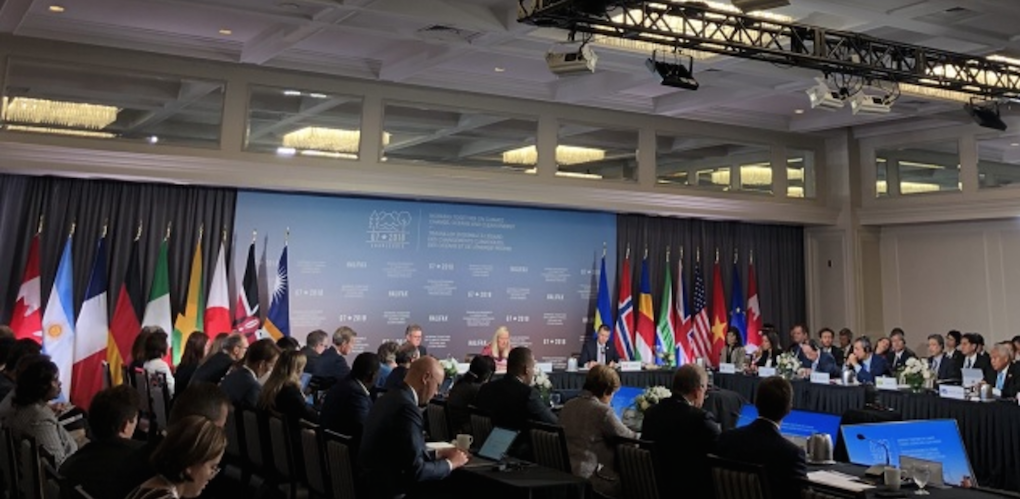In light of growing global concerns about oceanic pollution, Mathilde Jutras, a PhD student in McGill’s Earth and Planetary Sciences Department, produced a video proposing a solution to the continuously worsening ocean environment: Labelling consumer products with their carbon footprint. Jutras suggests that products should be labelled to indicate the carbon dioxide emissions from production and transport as well as colour-coded to indicate low, medium, or high levels of emissions.
Jutras entered her video in the Oceans Youth Innovation Challenge, which called for participants from each of the G7 countries to submit a solution to an ocean-related challenge that they were working to address. She was one of two winners of the challenge, both of whom were given the chance to attend the G7 Environment Ministers’ Meeting in Halifax, Nova Scotia Sept. 19-21 this year. The other contest winner, Kaoru Yokono from Japan, proposed packaging-free areas in stores and the standardization of non-plastic packaging among retailers.
Jutras made her video entry out of a desire to make science more accessible in the fight against climate change and oceanic pollution.
“I realized the importance of science, especially in the communication between scientists and decision makers,” Jutras said. “I saw this opportunity and thought it would be a really good chance to see what the decision makers think, how [the decision making process] works, and how scientists can make their work useful to decision makers.”
Jutras found her time in Halifax to be an eye-opening experience. Although a large portion of the G7 meetings were closed, she attended several environmental outreach events and presentations during the coinciding Oceans Partnership Summit and Inspiration Expo.
“It was really interesting to attend the Oceans Partnership Summit on the first day and to see discussions with people from such different backgrounds […] trying to reach a consensus,” Jutras said.
Jutras noted the diversity of voices and the range of perspectives from which attendees approached climate change. She was pleased to see the variety of stakeholders present to take a multi-disciplinary approach to waste management, one of the leading causes of pollution.
“There are people who are all about technology, saying that we can [make] plastics that are 100% recyclable,” Jutras said. “But [someone else pointed out] ‘the problem is, in Southeast Asia, they have so much plastic being consumed and they don’t have the infrastructure to recycle. So even if industry does [make] recyclable plastic, it’s just going to go in the trash anyway, or directly into the rivers.’”
Even if producers want to help slow down climate change by doing the right thing, they face constraints.
“There are some companies that want to do stuff that’s better [for the environment], but they don’t have money and can’t get money from the banks to start a project,” Jutras said. “So [the man at the conference] was attacking [the problem from] the financial side [….] I thought that was really interesting and it inspired me.”
Although oceanic protection and the broader topic of climate change can seem daunting, local and national governments, industries, institutions, and individuals all have the power and responsibility to tackle these issues.
“One of the things I realized is that not a lot of people will make a major change, but everyone will make a small change,” Jutras said. “And, if everyone is trying to make a change, it will make a big impact.”









